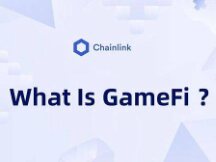Examine the development history of blockchain and GameFi games
instructions
The gaming industry has grown over the past two years. By 2021, the total size of the global sports industry is estimated at $ 175.8 billion and the number of players will reach nearly $ 3 billion. End-to-end games, page games, mobile games, and gold chains have now spread to a huge part of the gaming industry.
Of course, the gaming industry is still facing some problems, especially in our country the government has announced laws affecting and protecting mostly children from gambling. The emergence of alternative entertainment affects the sports industry The sport itself has a short lifespan and the competition in the industry is very strong. Additionally, the industry has a high level of oligopoly, which makes it difficult for small and medium sized sports. The producers are alive.
Bitcoin was born in 2008. Ethereum was created in 2013 by a young genius, Vitalik Buterin. Since then, the blockchain industry has grown significantly. Ethereum announced smart contracts to provide sub-platform tools for the application ecosystem. A particular application of the blockchain has always been a research guide by the pioneers. In addition to using blockchain technology to transform financial and economic capital, the mix of blockchain and games is also a topic everyone wants to discuss.
Blockchain games are the use of blockchain technology in online games to solve some of the problems of traditional games by using the functionalities of blockchain technology, such as decentralization, transparency, and security. Currently, blockchain games are typically delivered as DApps. The popular game, represented by Axie Infinity, was born, and a new business model, Play To Earn, was born.
Gaming Industry Snapshot

Figure 1 Overview of Gaming Industry Chain
Game IP Holders: Similar to raw materials for native game development, they provide one of the “raw material” IPs for game development. Any IP can be incorporated into games and "bought" by producers such as cartoons, movies, stories, etc.
Game Developer: A person who develops a game, usually based on the studio model, where the studio is a game. Small teams typically have 30-50 players, medium and large teams have over 100 players.
Game Editor: You can think of it as a "supplier" who is responsible for specific tasks such as sales, operations, upgrades, ports, and product development. The main role of advertisers is to "sell" their games to generate traffic. The current activity is a combination of research and transport, that is, development and distribution are done on their own.
Channel Provider: A “sales / distribution platform” for games that is an automotive service provider. Many legitimate online websites, online game stores, mobile stores, offline and offline stores, internet cafes, and newsletters are all divided into retail channels, and there are many types. Channel traders often rely on revenue sharing and the communication of their income, which is the most reliable “inside” link in the trade chain.
Business Marketing
Despite the combination of gamers and spending with the new Crown Plague in 2020, the negative impact of the second transmission impact will not be greater until 2021. Remote offices and disruptive products will continue to pose a challenge to the company. game industry, in particular the game console and PC games industry.
Newzoo announced the "2021 Global Market Release Report" in July 2021. According to the report and related information, the global market is expected to generate product sales of $ 175.8 billion in 2021, down slightly from 1, 1% compared to last year. This year. The report provides detailed information on the revenue distribution for each regional and vertical business along with the growth prospects of the global economy for 2024. Each region and industry description is as follows.
The report estimates that mobile gaming revenue will reach $ 90.7 billion by 2021, up 4.4% year-over-year.
Mobile games are less likely to be affected by transmission side effects than console games and PC games. Growth of half of sports revenues.
By 2024, mobile gaming revenue growth will continue to outpace that of console and PC games, driven by key industry drivers, continuing to innovate in the mobile gaming solutions market and supplying mainframe game publishers. and PC to mobile devices.
Apple's removal of the Advertising Identifier (IDFA) will result in unrestricted mobile marketing, including restrictions on ad revenue (revenue excluding Newzoo content. Standard statistics) and the use of advertising to rely on the exactness. Games published by users may be affected, but this method does not prevent users from consuming the games.
The continued growth of mobile games also means that the market share of PC games will decline slightly over the next few years. Meanwhile, the growth of next-generation console game content by 2024 will accelerate console game revenue growth in the gaming revenue world. Many games slated for release in 2021 will hit the market in 2022 or later.
Annual console game revenue in 2021 is expected to drop 8.9% to $ 49.2 billion, largely due to the impact of the new genre of 3A console game upgrades. . The development of Level 3A console games required a large amount of integration and high cost development. Similar effects exist in PC games, but less frequently.
In 2021, the global PC games industry is expected to generate revenues of $ 35.9 billion, down 2.8% from a year ago. Most of that revenue ($ 33.3 billion) came from digital PC games and an additional $ 2.6 billion from PC games. By 2024, website gaming revenue will continue to decline as web gamers continue to move to mobile devices.
In 2021, sports revenue in Asia-Pacific and North America will represent 50% and 24% of global revenue per year, respectively. By 2024, the gap between these two regions will be slightly reduced. The reason is often that there will be new growth in Latin America, the Middle East and Africa.
Growth of the large market in 2021 - Statistics by region
By 2021, Asia-Pacific, with a market capitalization of $ 88.2 billion, will be the region with the largest share of global sports revenue, accounting for 50.2% of total international games revenue. Among them, Chinese business has become the largest sports turnover in the Asia-Pacific region with a turnover of 45.6 billion dollars.
The impact of this new disease is also low as the sports market in the Asia-Pacific region is mainly made up of mobile games. In comparison, North America is more affected by the ubiquitous spread of most console game users. However, North America still ranks second in the world in terms of market revenue in 2021, at $ 42.6 billion (mostly in the United States).

Figure 2 Major market growth by region in 2021 [6]
Global gaming market segments in 2021
The spread of new diseases across the world has had a major impact on the development and distribution of the game and is slowing down many games and will affect the overall revenue of the industry in 2021. Among them, console games are the most difficult, and PC games are also affected.
Compared to mobile games, console and PC game development depends on group size, is more expensive to develop, and requires more cross-border collaboration. The delay in the new generation of console games (like the PlayStation5 and Xbox Series XIS) also caused serious problems for two major consoles, especially PlayStation, as their games were sold out when they were released. Xbox, on the other hand, receives a paid service in the form of an Xbox Game Pass subscription.
In addition, the global semiconductor shortage has compounded the problem, negatively affecting electronic devices such as renewable electronics and PC gaming hardware. Taking this into account, console game sales in 2021 were $ 49.2 billion, up 8.9% from last year, and PC game revenue was $ 49.2 billion. $ 35.9 billion, down 2.8% from a year ago. These two segments are expected to resume growth later this year.
On the other hand, the impact of the new Crown Plague on mobile games is even weaker. This is because the income of mobile games depends on the users of popular games and other games. In 2021, the turnover of this segment will reach 90.7 billion dollars, representing a steady growth of 4.4% compared to the previous year. Although hardcore mobile games and cross-platform games have increased consumer demand for high-end mobile devices, the global semiconductor shortage still has an impact on the mobile gaming industry. No host and PC are important.

Figure 3 Global Industry Segmentation in 2021 [6]
2021 game player structure
By 2021, the number of players worldwide will reach 3 billion. Compared to 2020, this figure increased by 5.3% last year, indicating that the strong growth of the sports industry in 2020 will not only promote further growth of players, but that there are more space. development. As in previous years, the main drivers of player growth are the increase in the number of Internet users, improvement of the network condition and the availability of information on mobile phones.
The main drivers mentioned above are particularly strong in developing regions such as the Middle East, Africa and Latin America, which are also the regions with the highest number of tourists. The Asia-Pacific region, including emerging markets such as Central Asia, South Asia and Southeast Asia, has the largest number of sports enthusiasts in the world, including many international players ( 55%). other places.

Figure 4 Global Gaming Player Model in 2021 [6]
Future development of the sports industry
The real estate market will recover soon with a slight adjustment in 2021. Global trade will grow at a CAGR of 8.7% (2019-2024), over $ 200 billion in 2023, with total revenues reaching 218.7 billion dollars. dollars in 2024.

Figure 5 Forecast of sales on the world market [6]
By 2022, the total number of players worldwide is expected to exceed 3 billion. The total number of gamers in the world will grow at an annual growth rate of 5.6% (2015-2024) to reach 3.3 billion by 2024. The growth of the total number of gamers Users will slow down as more and more users around the world access the Internet through mobile devices. By 2024, the growth rate of all players will be reduced to “only” 3.2%.
By market segment, most of the gamers are mobile game players. By 2021, around 2.8 billion of the world's 3 billion gamers will be mobile game players. By 2024, the total number of mobile game players is expected to reach 3.1 billion, more than 3 billion years ago. By comparison, there will be 1.4 billion PC game players in 2021, including web game players who will slowly transition to mobile games. By 2021, the total number of console game players will reach 871 million. By 2024, the number of console gamers will continue to increase, mainly due to the growth of console games in two major markets: China and South Korea. Before that, the development of console games in both markets was not very strong.

Figure 6 Big estimate of the world player [6]
game company name
By 2020, the top 100 sports companies in the world had total revenue of $ 166.3 billion, an increase of 23% from the previous year, accounting for 94% of revenue. total business by market (excluding advertising) in 2020. Compared to 2019, sales of the top 100 listed companies represented 93% of total market sales. , making 2020 a year in which the growth of major sports companies has further strengthened. Currently, the world's largest sports company is Chinese tech giant Tencent. Tencent is a 100% parent company on Riot Games and is involved with many business leaders as well. Last year, Tencent generated a total of $ 27.4 billion in gaming revenue, up 34% from last year, nearly $ 10 billion more than the second highest grossing Sony business.

Figure 7 Top 10 Gaming Companies [6]
Blockchain game overview
When it comes to blockchain games, the first thing that comes to mind is the writing and marketing process represented by CryptoKitties in 2017 offering “products” and “exclusive products”. member of the "blockchain with gameplay" tool. On December 9, 2017, Ethereum trading was banned once with 14,000 assets per day. Since then, more and more chain games have appeared, and the theme of the game has also diversified.
As of September 27, 2021, according to data from DappRadar, there are a total of 836 Dapps games spread across the network, of which 927,000 are game users as of September 27, and the product market is daily at 15.62 million. dollars. Since July 2021, the information game has grown rapidly, increasing the number of players from 80,000 in early April to 928,000 in September, and the day has gone from around $ 500,000 in early April to an average of around 40. million USD. Daily business volume exceeded $ 93 million.

Figure 8 Total Network Chain Game Consumer and Industry Packaging [DappRadar]

Figure 9 Top 10 packaging industries over the past 30 days [DappRadar]

Figure 10 Top 10 user rankings over the last 30 days [DappRadar]
According to data released by Nansen, the development of blockchain games can be divided into four main stages.

Figure 11 Blockchain Game Upgrade Step [2]
Step One: The market is dominated by newer NFT minigames and development minigames, and although the game is small, it opens up the chain games market.
The second phase: games on terminals and mobile games with the game to receive and the NFT as key characteristics and attributes. Compared to existing games, the game is not enough, and the improvement is difficult and the cycle is short. And most importantly, because the Treasure ignores gameplay and short development cycles, many small games with a mix of pros and cons are quickly dominating the market.
Third level: As the second step, almost at the same time, we started to develop better toys. It's also a blockchain-based group indie game, but more than a second step. Adding solo groups and members improved the overall performance. A little curiosity, players are still engaged in player chains and chain games, enjoying the great games. Slowly he entered the public eye.
The fourth step: access high-quality 3A game products, or upgrade new products, or add blockchain technology or content to the old chain, and NFT and Play to Earn have become an integral part of the game. .
Currently, the chain game industry is between the second and third level, and at the same time, many 3A companies have also tried in this area, but there are some mature products in the market. . Thousands of players who have already entered the arena have carried the chain of affairs with one hand, and as players continue to do so, the demands of good sport have increased.
At the same time, novice players are willing to pay for the equipment and content of the game. Players like this will most likely adopt the P2E logic of the game. Encourage more players to still love the blockchain industry, while involving more companies and developing great games. In the hope of visibility, improving the agility of the game and gaining acceptance from 3A game makers will bring a lot of blood to the new blockchain.
game cookie mode
According to information posted on the internet, MixMarvel CEO Mary Ma first proposed the concept of GameFi, which is a financial game, while speaking at the Wuzhen summit in mid-2019.
Generally speaking, GameFi = DeFi NFT game means bringing DeFi and NFT commitments into the game and transferring player's tools to property or devices, reserve token, etc.
GameFi refers to the presentation of unreliable financial products in the form of card games, DeFi rule sets, and NFTizing game derivatives. A special feature is that if the user's assets turn into tools or equipment in DeFi games, it allows the user to earn income or rewards during their participation in sports. DeFi is still the heart of GameFi, NFT is an important means of decentralization, and gaming is GameFi's shell. With the rise of Axie Infinity, GameFi's new Play To Earn business model was born.
Currently, most DeFi game modes include role-playing, virtual locations, training and combat, as well as multiplayer setups. Compared to previous liquid models, the GameFi project offers more interaction, experience and understanding with the user, and at the same time, greater enjoyment. For example, many games use NFT animals for breeding. , use NFT tools to improve intelligence, hire NFT to earn income or teach PK combat to fight and complete tasks, allow users to earn money while playing.
play the model
Play To Earn is a basic business model based on blockchain technology, where players can write and play games to gain ownership of in-game assets or tokens. Compared to free games, play games and other genres, most of the revenue from Play To Earn games is not going to the big game companies, on average, but to gamers. By participating in a number of industrial enterprises, players can create value for other players and developers. Additionally, players can receive in-game prizes. These digital tools can provide valuable cryptographic analysis of the blockchain. P2E focuses more on aggregation than income.
In fact, the P2E industrial model has a long history in traditional games, and some games still have a group of players who make money through sales or products. In blockchain games, this model has been updated, allowing players to earn real money by playing with crypto assets (NFT). By participating in this virtual marketplace, players can receive prizes such as in-game assets and tokens, which can be traded or sold in the open store.
Blockchain technology provides members with a legacy in the game and allows them to play games to increase their value, and is an integral part of the game. Peer-to-peer models. Most of the revenue from P2E games goes to the good players, not the big game companies in the middle. By engaging in a wide range of industries, players have been able to create value for other players and developers. In turn, they were rewarded with the strengths of the game. This digital treasure may be a cryptographic legacy of blockchain identification, making the peer-to-peer model similar to blockchain games.
The current gaming legacy only exists in the gaming ecosystem, and it is difficult for people to market or sell digital assets outside of the platform, which is why the games chain of Play To Earn brand are a big change in the world of sports.
Some features of P2E mode:
I was already using DeFi's Farming to troubleshoot some issues early on. Some players will like the game because of the income, and some non-original players will be drawn to the game because of the income (which will or will not pass to players).
This game is not just about the game, NFT does the farming itself without the hassle of running water. However, if the game has the ability to perform well and the performance of the machine is attractive to gamers, then NFT makes no sense if gamers are still lost.
Farm income to support players maintained to solve the problem of overplayers in F2P games.
The main objective of most P2Es is to complement the management of the DAO so that the communities (the players' guild) can participate in the process of management, voting and income distribution.
Summary and outlook
With the development of 3D digital content development technologies such as Collaboration and Unreal, and the development of VR and AR software and hardware technology, the games should be over. Make an important presentation on the use of blockchain. The gaming industry has actively experimented with multidimensional vision, virtual world development, electronic device design, user independent design, and social, user-created and social platforms like Roblox. Regular exchanges and group changes such as open world, UGC platform social games, virtual currency, etc. In the future, more level 3A chain games will emerge, and this type of game will be extended to RPGs and racing games as well. answer to be satisfied.
The emergence of a new model of guild play brings new changes to the chain gaming industry. Existing games are focused on promoting and communicating knowledge of the game, and new game guilds provide the necessary opportunities for players without the tournament starting on time and provide training for early players. As a model to support the development of the sports ecosystem.
Currently, Game Model Earn has supported the development of the game. Future guidance for Play To Earn can be found on Decentraland and Roblox. Designed to deliver new services and financial benefits through virtualization. win mode. The monetization effect is usually achieved by manufacturers providing additional value added services, e.g. monetization, to producers.
Developers create global games, create skins, and sell them to players to improve the player's gaming experience. This will allow developers to reap real benefits from virtualization, and sandbox games will begin to migrate to the UGC platform. User development is supported by financial support, such as player development is important for past experience and relationships, which see new models of growth in the next blockchain ecosystem.

Scan QR code with WeChat































